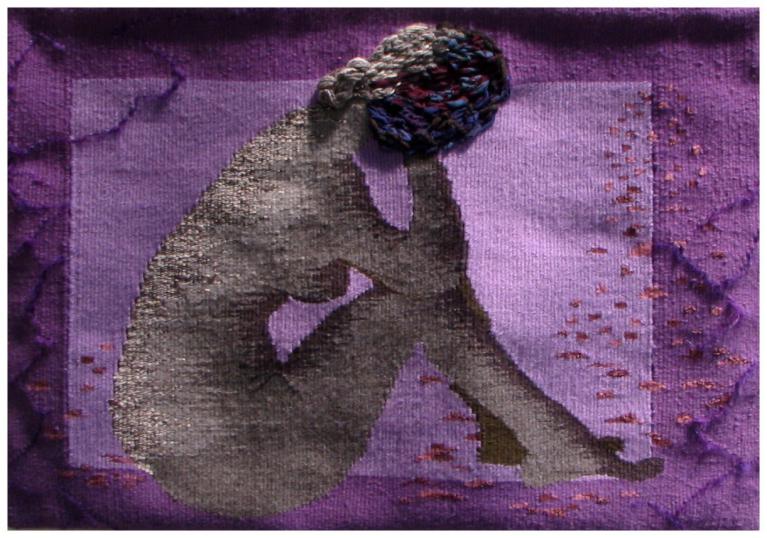Choice of colours
To start :
When you start your tapestry, you must make the cartoon, warp your loom and choose which threads to use (wool, cotton, linen, jute etc) which thickness? Which mix? What colours?
If you have been weaving for a long time, this research will lead you to search your personal stocks and eventually to complete a new order.
Testing :
When you have chosen your yarns, it is interesting to take a section of them and group them together.
This will give you an immediate idea of the tonality of your piece. You can then change colours by changing the number of threads for each colour.
If you want a thicker effect, you can mix multiple strands of thread in the same colour.
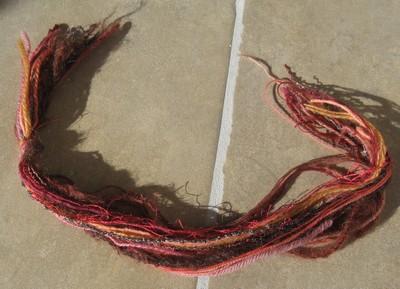
The colour chart:
Then lay out a small section of the chosen yarns in ascending and descending hues. (This may be necessary as a preliminary to working through the colours in progressive shades). This work is less useful if your pattern has very distinct areas, all in flat tones.
You can also decide to double or triple the strands of your threads in order to mainain the same final thickness..
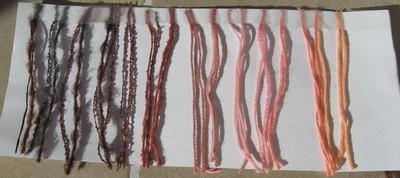
The test strip :
If your work requires a gradual passage of colours, is a good idea to work another small additional warp next to original warp which will be used to study the progression of colours
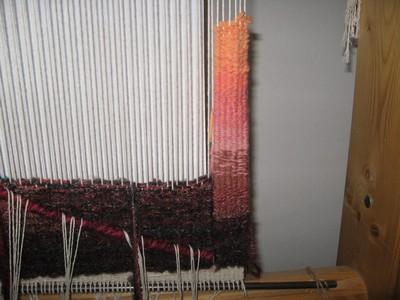
Working in progressive colours
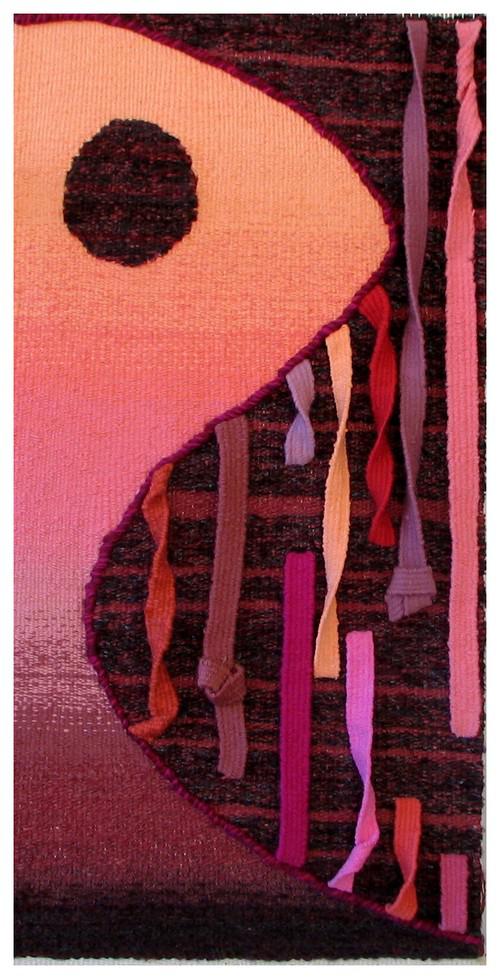
It is important ...
To understand the composition of colours; to be able to discern for example "blue" in a red or "green" in a blue, avoids tonal errors...but this is not a rule of the tapestry but a matter of personal choice.
You should also know the difference between colour and tone value, not confuse "lighter" or "darker" with more intense.
If you are, for example, in the process of reproducing a painting, it is imperative to make a black and white copy of the work, as you will find it much easier to see the interaction of values from white to black, through all the greys.
Weaving the colours
Changing colours
If you want to blend colours in a progressive way from the darkest to the lightest or the opposite.
first make a sample and then a colour chart.
The greater the colour difference you expect, heighter you will need to work at to achieve it.
In theory, it would be possible to go from a blue to a yellow, provided you have a lot of threads and a lot of space to do it.
Let's imagine a change to 4 grades and 4 threads of 3 strands each nominated A B C D.
Weave several full passes of weft of A.
Make a three stranded thread with 2 A and 1 B.
We will name this thread : A-1.
Weave half pass of thread A-1.
Weave 3 full passes of A.
Weave a half-pass of A-1.
Weave 2 full passes of A.
Weave 1 half-pass of A-1
Weave 1 and a half pass of A
Weave 1 full pass of A-1.
Weave 1 half-pass of A.
Repeat the last 2 steps several times if necessary.
Weave several full passes of A-1.
You have left the colour A.
Make a three strand thread with 2 B and 1 A
We will name this thread A-2.
Work as above
Leave out the colour A-2.
Make a 3 strand thread with 3 B
We will name this thread B.
Follow the same procedure.
Then make B-1 (2B+1C).
Then make B-2 (1B+2C) Then C (3C)
Then make D-1 (2C+1D)
Then D-2 (1C+2D) Then D(3D)
Caution, this is only an example, all the skill is in knowing how to lengthen all the steps if the difference of colour requires it in order to have a passage without visible traces !

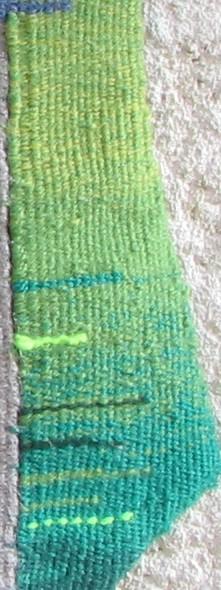
Beatings
You will use them in a work of this style :
The technique consists in bringing in muted or opposite colours in the same area, whilst following the pattern.
You will have to regulate the "tapestry weft errors"
